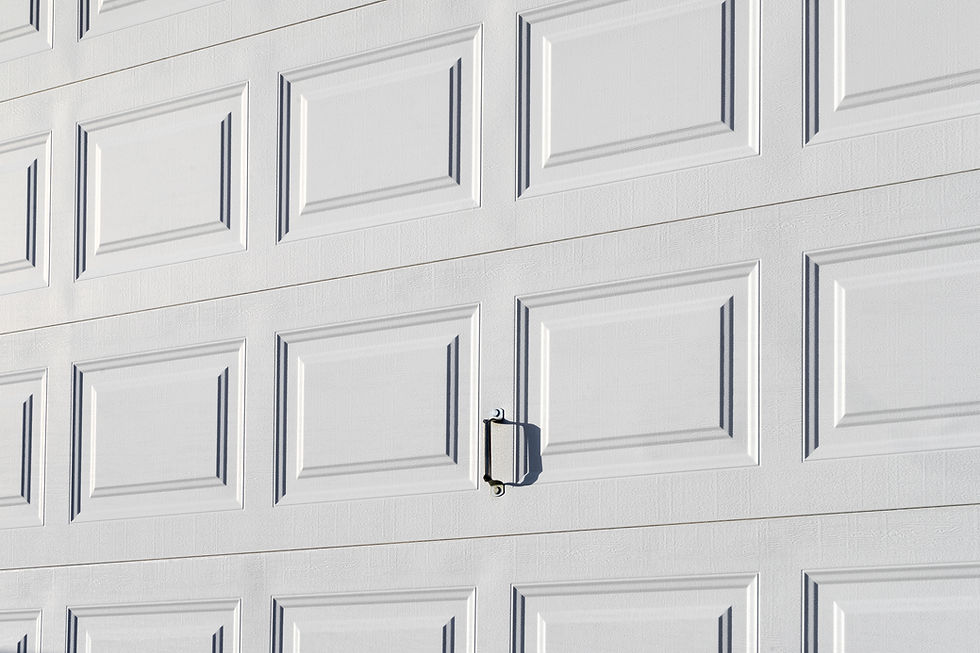How Weather Affects Your Garage Door (And How to Protect It)
- Garage Door Service

- Sep 9, 2025
- 2 min read
Your garage door does more than secure your car—it protects your home’s energy efficiency, structural integrity, and even curb appeal. Yet, many homeowners don’t realize just how much weather impacts a garage door’s performance. From freezing winters to scorching summers, humidity, and severe storms, weather conditions can cause mechanical strain, structural damage, and costly energy losses.
The good news? With the right preventive measures, you can keep your garage door operating smoothly year-round.

How Weather Affects Garage Door Components
Extreme Temperatures (Hot & Cold)
Cold Weather: Metal parts like springs and tracks contract, lubricants thicken, and doors may stick or move sluggishly. This extra strain can even cause parts to snap.
Hot Weather: Heat makes metal expand and can warp wood panels. Prolonged sun exposure may also cause paint to peel and weaken weather seals.
Moisture & Humidity
High humidity and rain cause wood doors to swell, while metal parts may rust. Excess moisture also damages opener wiring and sensors, leading to malfunctions.
Wind, Storms & Debris
Strong winds and flying debris can dent panels, knock doors off track, or even cause complete collapse in hurricane-prone regions.
Why This Matters: Performance & Energy Costs
Operational Issues: A door that sticks, moves unevenly, or strains the opener uses more energy and may fail prematurely.
Energy Efficiency: Damaged seals and poor insulation let outside air leak in, making your HVAC system work harder—and your energy bills rise.
How to Protect Your Garage Door from Weather Damage
1. Install Proper Weather Sealing
Bottom Seal / Door Sweep: Blocks water, dirt, and pests.
Side & Top Stripping: Seals gaps around the frame.
Panel Weatherstripping: Prevents drafts between door sections.
Threshold Seals: Ideal for uneven driveways.
2. Add Insulation & Caulking
Use foam insulation kits or replace your door with an insulated model.
Caulk around the frame and windows to block air leaks.
Apply an all-weather lubricant to springs, hinges, and rollers.
Inspect for rust, cracks, and worn-out seals.
Schedule a professional tune-up at least once a year.
4. Upgrade & Reinforce When Needed
In storm-prone areas, choose wind-rated or impact-resistant doors.
Protect wooden doors with weather-resistant finishes.
Install surge protection or protective casings for openers in humid climates.
DIY vs. Professional Care
Some tasks, like replacing weatherstripping or adding caulk, are simple DIY projects. However, repairs involving springs, opener wiring, or storm reinforcements should always be left to professionals. These components can be dangerous to handle without the right expertise.
Conclusion
Your garage door faces the elements every day—so it’s no surprise that weather can significantly affect its performance, durability, and energy efficiency. By taking proactive steps like sealing, insulating, lubricating, and scheduling professional inspections, you can save on energy bills, avoid costly repairs, and keep your garage door running smoothly all year long.
FAQs
1. How often should I replace weather stripping on my garage door? Typically, every 1–2 years, or sooner if you notice cracks, gaps, or brittleness.
2. Can I weatherproof my garage door myself? Yes—adding seals, caulk, and insulation is DIY-friendly. But spring replacement and track repairs should be handled by professionals.
3. When should I replace my garage door? If the door is over 15 years old, has frequent breakdowns, or isn’t energy efficient, replacement may be more cost-effective than repairs.



Comments